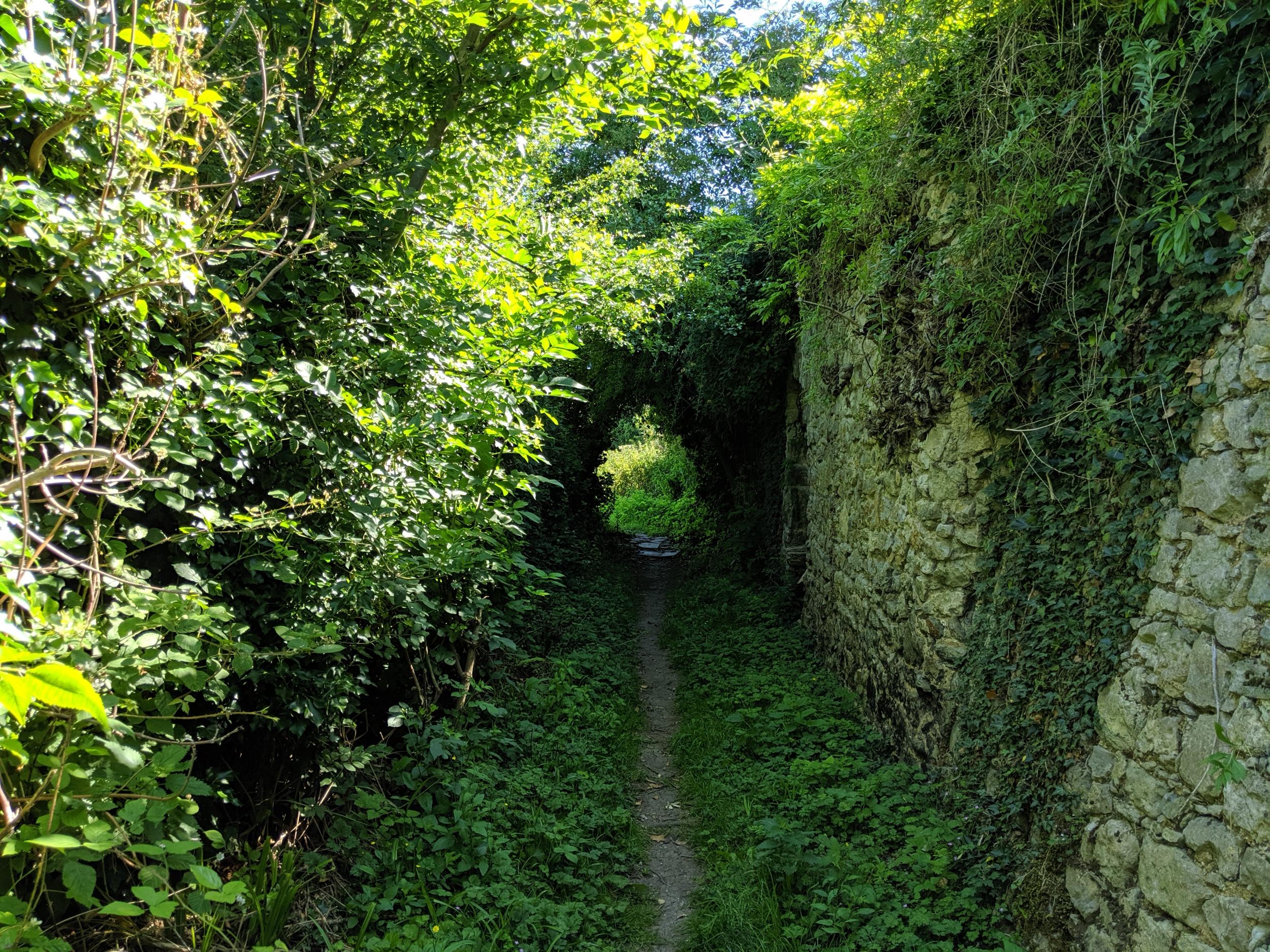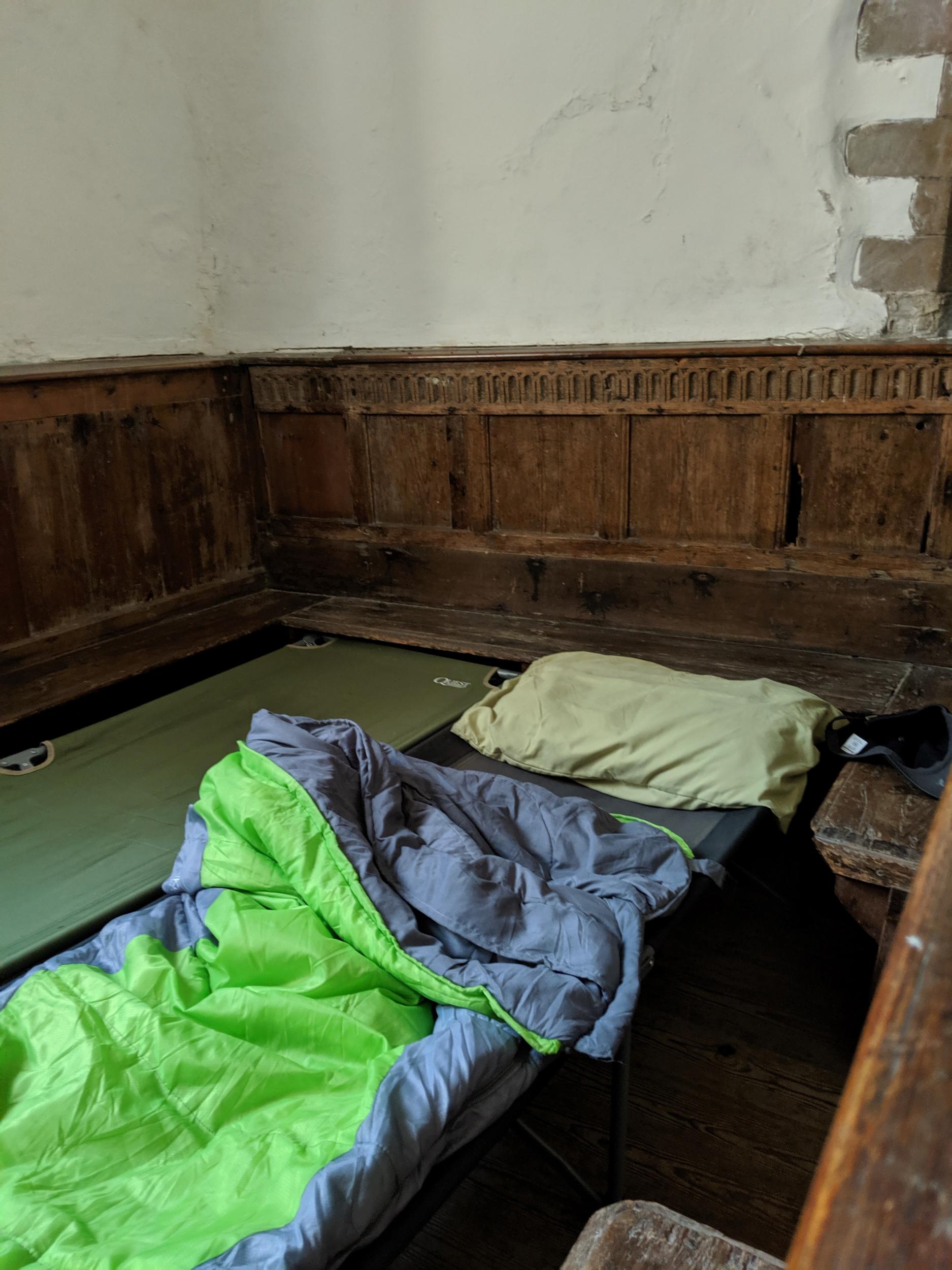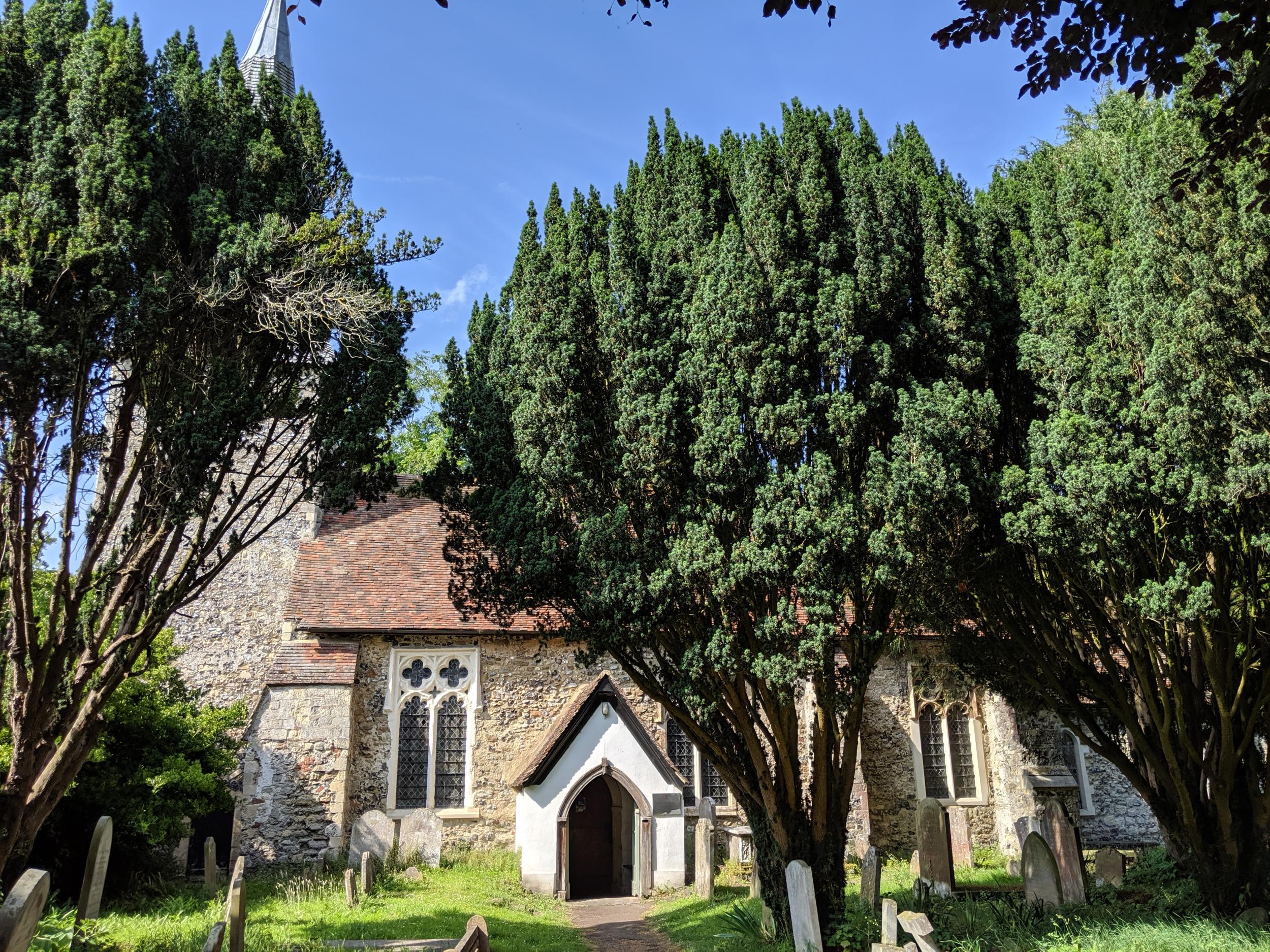Your support helps us to tell the story
From reproductive rights to climate change to Big Tech, The Independent is on the ground when the story is developing. Whether it's investigating the financials of Elon Musk's pro-Trump PAC or producing our latest documentary, 'The A Word', which shines a light on the American women fighting for reproductive rights, we know how important it is to parse out the facts from the messaging.
At such a critical moment in US history, we need reporters on the ground. Your donation allows us to keep sending journalists to speak to both sides of the story.
The Independent is trusted by Americans across the entire political spectrum. And unlike many other quality news outlets, we choose not to lock Americans out of our reporting and analysis with paywalls. We believe quality journalism should be available to everyone, paid for by those who can afford it.
Your support makes all the difference.I roll out my sleeping bag as far away from all the dead bodies as possible, fluffing up my pillow and resting it on the wooden pew where I will spend the night, and I wonder: am I actually going to get any sleep tonight?
The dead bodies have, of course, been dead for a very long time: my closest neighbour, Catherine Norton, died in 1610, and what is left of her resides beneath a solid-looking ledger stone in the floor of the 12th century church in Kent where I am staying. But that doesn’t stop me from texting my friends who know I am “champing” tonight to say: “I’m literally surrounded by dead people. I’m sleeping on dead people.”
“Champing” – an endearingly Church of England-esque portmanteau for church camping – is a worthy initiative of The Churches Conservation Trust (CCT), the charity tasked with protecting and maintaining many of the splendid but unused parish churches that dot the English countryside. There are some 18 participating churches, including a lime-washed kirk on the windswept Orkney coast and a majestic Gothic bell tower whose turrets soar high over Dartmoor. Entrusted to the care of the CCT, the £49-£59 fee for a night in one of their pews goes to help preserve more at-risk churches.
My hotel for the night is the Norman, Grade-One listed church of St Mary the Virgin in Fordwich, three miles outside Canterbury. The smallest town in the UK, it looks jigsaw puzzle perfect in late summer, an old market town surrounded by meadows and the River Stour. Its village pub, The Fordwich Arms, has a Michelin star, which seems excessive for a town of around 400 people. Sadly for me, it’s closed on Mondays, when I arrive, but the town’s other gastropub, the beautiful George & Dragon, practically overlooks the graveyard at St Mary the Virgin.
I am the latest in a long line of pilgrims to swing open its wooden gate in search of a place to rest. The church sits along the ancient pilgrim route from the coast to Canterbury, one that I am retracing by walking the new Augustine Camino, a modern, 70-mile pilgrimage route plotted over the leylines of Medieval Christianity, from Rochester Cathedral to Ramsgate on the Kent coast, where St Augustine landed in the 6th century on a mission to convert the English. Like Medieval pilgrims I have stayed at friaries and on farms, in coachhouses and convents. This morning I woke up in a room overlooking Canterbury Cathedral, trod the staircase worn down by kneeling pilgrims visiting the Shrine of St Thomas Becket at its heyday in the Middle Ages, then set off across the fields to Fordwich.
I find the satisfyingly heavy key to St Mary’s hidden in a secure place emailed to me by one of the Champing team that maintains the church. Inside, the pew where I will sleep has been strung with fairy lights and piled high with blankets, a sleeping bag and pillows. One transept has been converted into a little living room, with a kettle, coffee and tea, and a generous breakfast hamper piled beside a camping chair and wind-up lantern. Behind the organ a composting loo sits in a shed in a corner, surrounded by old furniture.

It all feels surprisingly homely for 900-year-old stone hall, but I am hampered by Catholic guilt, more accustomed to genuflecting in church than popping on the kettle. The Churches Conservation Trust are far more relaxed: on the website they urge champers to play the organ or clamber into the pulpit to deliver a sermon. “Can you drink alcohol? Of course. Don’t be silly,” advises the FAQ. Dubious, I wrap myself in one of the blankets and curl up in a pew with a book, occasionally casting an eye towards the front of the church, where the bare altar – still covered in a cloth – makes the sanctuary feel weirdly empty.
I go to the pub for dinner, crossing the graveyard in the twilight. It is village-pub busy, and the locals perched at the bar are amazed to hear I am spending the night alone in their church. The Churches Conservation Trust usually expects people to champ in pairs or larger groups, but made an exception for a lone journalist. My walk home is lightened by the two pints of amber ale I enjoyed with dinner, and I fling open the heavy door to my cavernous bedroom with gusto. The darkness pressed against the windows makes the glow cast by the fairy lights and lanterns feel comforting and homely, and I go so far as to put on some music and make a cuppa. By the time I turn in, opening the door to my box pew – a square corner pew usually kept for families – I am accustomed to the strange creaks and scrapes that are amplified by the acoustics, to the smell of old wood and stone. My sleeping bag is warm, and I fall asleep before the wind-up lantern sputters into darkness.

I wake up, entirely unhaunted, in a pool of the soft light that trickles through the 14th-century glass windows. I have a long walk ahead, 13 miles across open country to Minster Abbey in Thanet, so I make myself a coffee and pack up. Feeling like I’ve spent enough time lurking at the back of church, I carry my breakfast to the altar rail, where the biggest beam of sunlight has filtered through the stained glass. I sit in its warmth with my back against the altar and sip my coffee, and realise that while this is still a house of God, I feel entirely at home.
Travel Essentials
Champing churches have been reopening as of early July.
For more information visit champing.co.uk

Join our commenting forum
Join thought-provoking conversations, follow other Independent readers and see their replies
0Comments